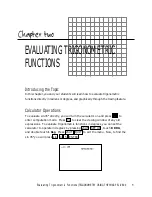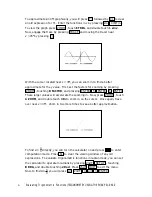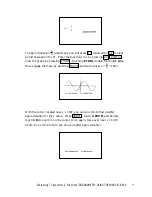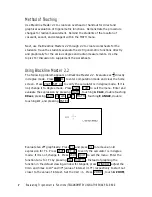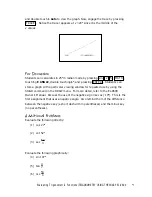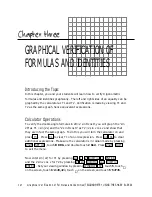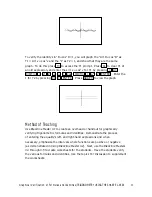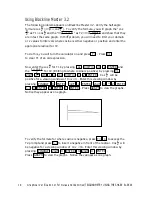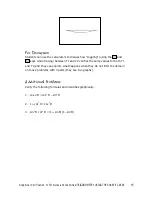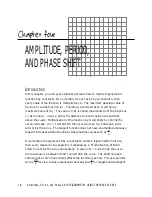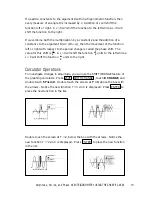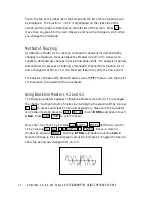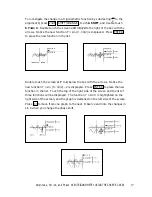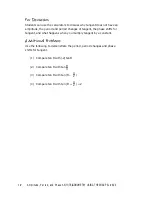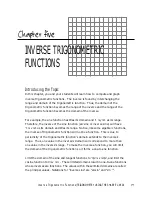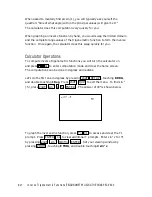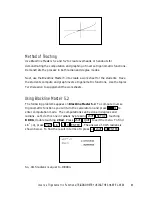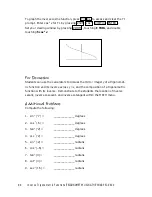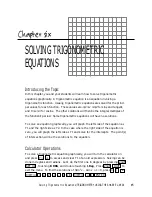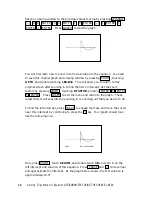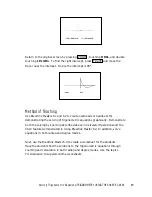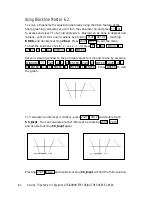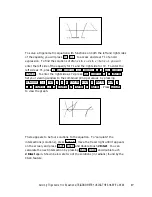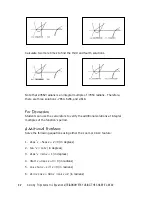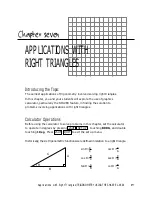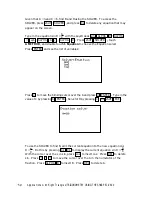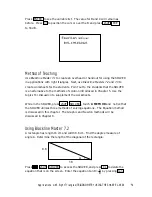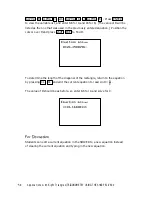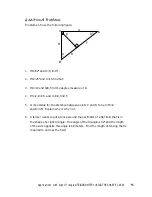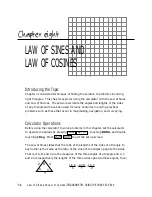
Introducing the Topic
In this chapter, you and your students will learn how to compute and graph
inverse trigonometric functions. The inverse is found by interchanging the
range and domain of the trigonometric function. Thus, the domain of the
trigonometric function becomes the range of the inverse and the range of the
trigonometric function becomes the domain of the inverse.
For example, the sine function has IR as its domain and -1
≤
y
≤
1 as its range.
Therefore, the inverse of the sine function (arcsine or inverse sine) will have
-1
≤
x
≤
1 as its domain and IR as its range. Notice, like some algebraic functions,
the inverse of trigonometric function will not be a function. This is due to
periodicity of the trigonometric function's domain extends to the inverse's
range. Thus, one value in the inverse's domain will correspond to more than
one value in the inverse's range. To make the inverse a function, you will limit
the domain of the trigonometric function so it forms a one-to-one function.
Limit the domain of the sine and tangent functions to -
π
/2
≤
x
≤ π
/2, and limit the
cosine function to 0
≤
x
≤ π
. These limited domains result in one-to-one functions
whose inverses are functions. The values within these limited domains are called
the principal values. Notations for "inverse sine" are "arcsin" and "sin
–1
".
Inverse Trigonometric Functions/TRIGONOMETRY USING THE SHARP EL-9600
19
INVERSE TRIGONOMETRIC
FUNCTIONS
Chapter five

